How the evolution of primate sociality is linked to brain networks for pair bonds.
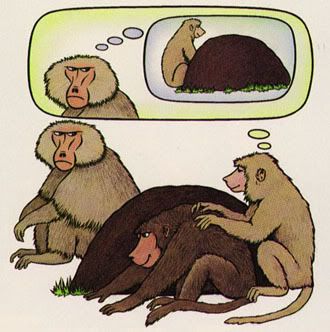
Social conservatives are fond of linking morality with monogamy and will be quick to condemn the moral crimes of adulterous felatio while ignoring the moral crimes of cutting social programs for poor mothers. However, in a bizarre twist, it seems that morality and monogamy are closely intertwined, though it’s doubtful many conservatives will champion the reasons why.
Those of you who are regular readers of these pages know that I’ve touched on the issues of evolution, cooperation and altruism on several occasions (for example see here and here). In the latest issue of the journal Science, Robin Dunbar revisits this question with a unique perspective on why some species (including humans) succeed so well as members of a group.
While it may come as a shock to the Milton Friedman’s of the world (proponents for the brand of capitalist theory often referred to as “free market fundamentalism”) human beings are a distinctively socialist species. While we come nowhere near the extreme for the natural world (the eusocial bees, ants and termites win the Karl Marx utopian award for selfless behavior on that one) we humans are far and away the most social species of the most social order of the most social class in the animal kingdom (for those of you not up on your Linnaean terminology I refer to primates and mammals respectively). How can I claim such a thing? A very simple measure will suffice: social group size.
Humans have the largest group sizes of any primate. Baboons are known as having the largest group sizes of all non-human primates with an average of about 40-50 individuals and only approach as many as two hundred under extreme circumstances. Humans, in contrast, have an average group size of about 150-200 individuals in hunter-gatherer societies and a maximum group size in the millions under the unique conditions we experience as the result of industrial agriculture. And these large social groups require substantial brain power. All organisms need to successfully predict and navigate their environments and this becomes far more complicated when there are multiple actors interacting in the same social circle.
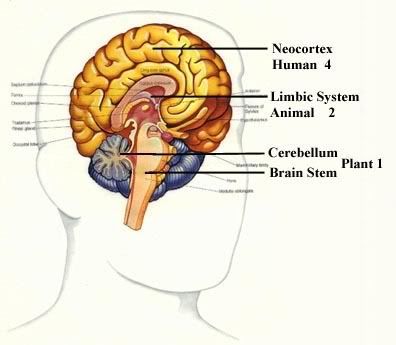
In the 1990s Robin Dunbar championed an idea known as the Social Brain Hypothesis. He found that mammals who lived in the largest social groups often had the largest neocortex to brain ratio. Since the neocortex is associated with complex and abstract thought he suggested that the demands of group living selected for an increase in neocortex size. In his latest paper in Science he and Susanne Shultz have suggested that there is even more than simply group size that may have influenced this selective process. When the authors analyzed the mating strategies of those highly social mammals that had the largest neocortex they found that pair bonds were significant in all groups except primates.
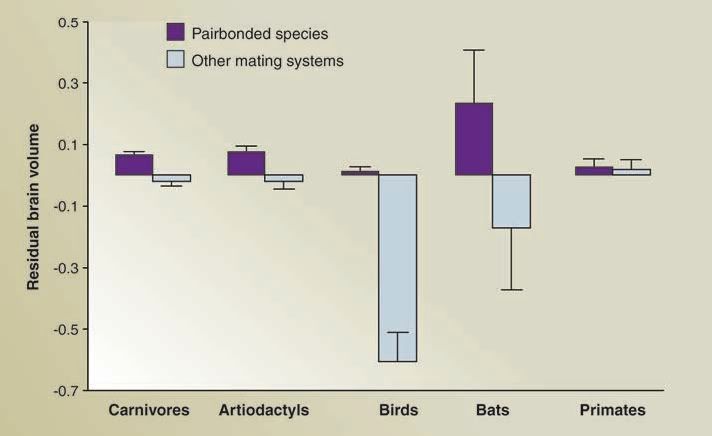
All social mammals except primates show connection between brain volume and pair bonding
Pair bonds occur when an animal stays with their partner for extended periods rather than simply meet up during the mating season. Pair bonds are cognitively tricky because monogamy is a risky business. In order to avoid getting stuck with a bad partner (either one with bad genes or one who won’t share the costs of reproduction) individuals have to be careful in choosing a good-quality mate. Also, pair bonded individuals have to carefully coordinate their activities to be in synchrony with the other. This may require substantial brain power to predict the other’s behavior and adjust your own behavior accordingly. But why is it significant that the social primates don’t show this connection between a large neocortex and pair bonding like other mammals do? Well, whenever there is a consistent pattern in nature that is violated in a single case a good scientist will want to know why. Primates are already unique among mammals, so any unique qualities that jump out could help us understand the evolution of our lineage.
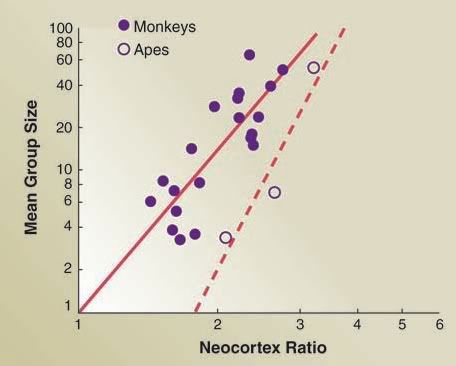
As mean group size rises so does neocortex ratio
What Dunbar and Shultz have suggested is that the social brain that was selected under conditions for pair bonds in other species has been coopted and utilized for strangers in primate social groups. As the authors state in their paper:
This would explain why, as primatologists have argued for decades, the nature of primate sociality seems to be qualitatively different from that found in most other mammals and birds. The reason is that the everyday relationships of anthropoid primates involve a form of “bondedness” that is only found elsewhere in reproductive pairbonds.Primates, and humans in particular, are such good social cooperators because we can empathize with others and coordinate our activities to build consensus. Rather than natural selection being a process of selfish individuals maximizing their own fitness, this “bonding brain” hypothesis suggests that natural selection, at least in primates, was a process of maximizing individual fitness through the promotion of the group as a whole. There is already a vast literature on the proximate mechanisms (the hormonal and neurobiological aspects) that promote both pair bonding and affiliative behavior. While there are still many more questions that need to be answered, this research is a promising candidate for understanding the evolutionary origins of primate sociality and human morality itself.
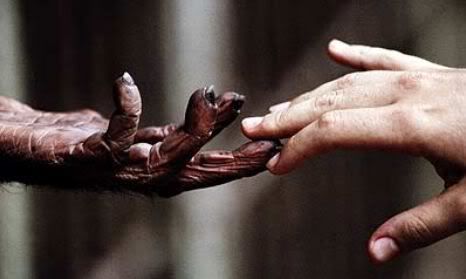
This research doesn’t imply that monogamy causes increased social cooperation, merely that the brain mechanisms selected for in the evolution of pair bonds have been extended to additional members of the primate order. But it’s unfortunate that so many conservatives are adamantly opposed to understanding evolution. Finally a connection between morality and monogamy has been established by Science and their refusal to understand means they'll miss a terrific opportunity to pound the bully pulpit.
Reference:
R.I.M. Dunbar and Susanne Shultz (2007). Evolution in the social brain. Science 317:1344-47. DOI: 10.1126/science.1145463


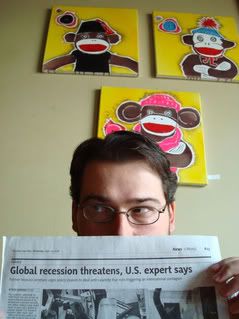















No comments:
Post a Comment